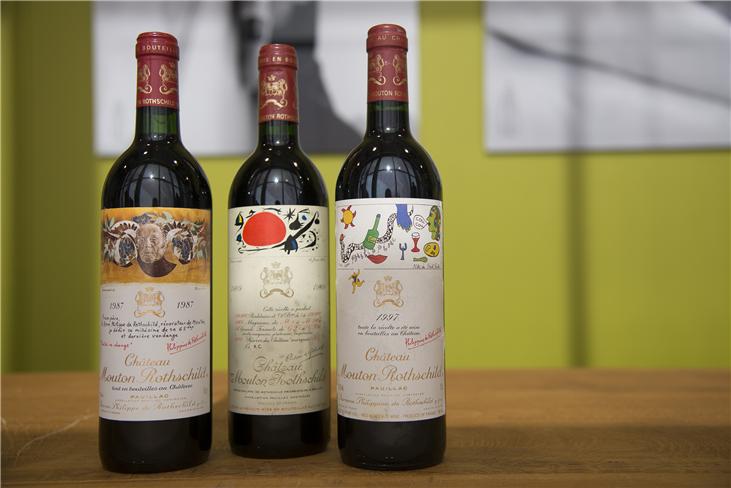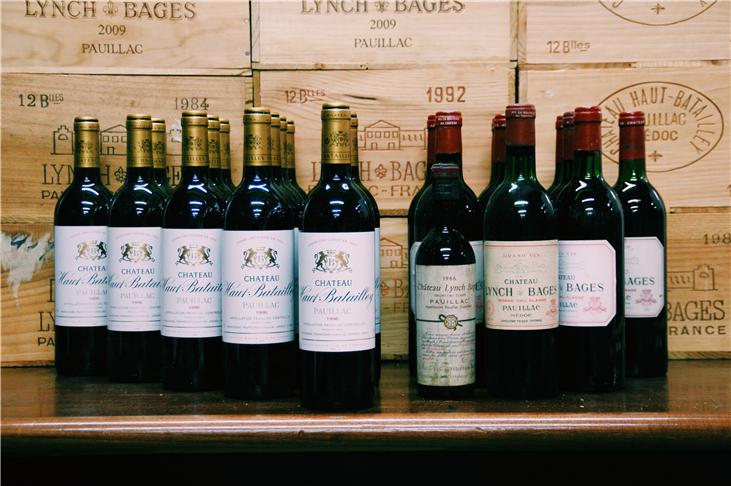The Bordeaux Wine Official Classification of 1855 must be the most famous and influential classification of all. It’s surprising that this list has become so important as it was only meant to give an ‘impression’. Today 100 point rankings, prices and reputations for individual wines have much more influence. Yet there’s no doubt that the properties listed on the 1855 Classification manifestly excel in quality.
The history of the 1855 Classification
In 1855 Emperor Napoleon III organised the ‘Exposition Universelle de Paris’. It was a world’s fair where he wanted to present all that was best about France, including its wines. The Bordeaux Chamber of Commerce asked the Syndicate of Courtiers to make a list of the best wines in the region grouped by quality into five levels. In nearly two weeks time they turned in the famous - and notorious - list. They based the ranking on the market price of the wines and included 58 properties.
The list exclusively mentions wines from the Médoc region, with one exception: Château Haut-Brion from Graves. Of course, not everyone was pleased with this list. Other wine regions like the Graves had a much longer wine history and other wines, for example Cheval Blanc in Saint-Emilion, were then highly regarded. A century later the region Saint-Emilion installed their own classification.
Since 1855 the original list of 58 properties increased to 61. The three châteaus Léoville, Pichon and Batailley have been split into two or more châteaus, and Pouget and Pouget-Lassale have been combined into one: Château Pouget. Third Growths Château Dubignon has disappeared but its vineyards are now part of other Margaux châteaus.
The ranking of ‘Les Grands Crus classés en 1855’
The ranking happened according to the château’s reputation, the trading price and the quality of the wine. As we mentioned before, only châteaus from the Médoc region were listed, except for Château Haut-Brion from Graves. The red wines were subdivided in five different classes:
1. First Growths or Premiers Crus
2. Second Growths or Deuxièmes Crus
3. Third Growths or Troisièmes Crus
4. Fourth Growths or Quatrième Crus
5. Fifth Growths or Cinquièmes Crus
The list of the white wines, which were then less important than red wines, only mention the sweet varieties of Sauternes and Barsac. There are only three different classes:
1. Superior First Growths or premier Cru Supérieur
2. First Growths or Premier Crus
3. Second Growths or Deuxième Crus
A closer look at the five Premiers Crus
The five First Growths are always a good investment for your wine cellar. Their bouquets gradually evolve over the years becoming increasingly complex with soften tannins. Their quality is incomparable and retains for decades.
Château Lafite Rothschild
Described to be “the most superb in all of Médoc”. With the finest fruits of the three this wine is elegant and delicate. It’s no wonder Château Lafite ended up high on the list in 1855. Thirteen years later Baron James de Rothschild purchased the estate, and changed the château’s name.
Today the vineyard covers 112 hectares. The soil is well-drained and well-exposed to the sun. It’s made of fine deep gravel mixed with aeolian sand - blown in by the wind - on a subsoil of tertiary limestone. They cultivate Cabernet Sauvignon (70%), Merlot (25%), Cabernet Franc (3%) and Petit Verdot (2%) grapes.
Discover our Château Lafite Rothschild Premier Crus wines in our online shop.
Château Latour
The wines of Château Latour already received recognition in the 16th century and have only built up their reputation over the following centuries. In 1714 a barrel of Latour was already worth four to five times more than a barrel of a typical Bordeaux wine. And 50 years later the ratio had risen to 20! In 1855 there was no doubt that Château Latour deserved the Premiers Crus status.
The vineyard benefits from an exceptional location. It is located at the southern edge of Pauillac in the Médoc region - Northwest of Bordeaux - and borders the Saint Julien vineyards of Château Léoville Las Cases. The Château Latour’s Grand Vin is made exclusively from ‘vieilles vignes’, which are around 60 years old. More than 90% of the blend consists of Cabernet Sauvignon, which gives the wine its rich yet fresh and elegant taste.
Discover our Château Latour Premier Crus wines in our online shop.
Château Margaux
A century before the great classification Thomas Jefferson already discovered the four best Bordeaux wines: Châteaux Margaux, Latour, Haut-Brion and Lafite - with Margaux as his absolute number one: “There couldn’t be a better Bordeaux bottle.” A century later Margaux was the only Premiers Crus wine on the 1855 Classification that was marked ‘twenty out of twenty’.
The soil of the vineyards of Château Margaux is mostly gravel with clay, sand and limestone. And although vines are kept at 36 years of age, there are parcels with Cabernet Sauvignon vines that are 80 years old. Since 2012 the vines used for Château Margaux’s Grand Vin have been farmed using 100% organic farming techniques. The final blend consists of 87% Cabernet Sauvignon and has a beautiful perfume of violets and sweet spices.
Discover our Château Margaux Premier Crus wines in our online shop.
Château Haut-Brion
Château Haut-Brion is the sole Premiers Crus wine that isn’t produced in the Médoc region. The estate is located in the north of the wine-growing region of Graves, south of Médoc. This exception indicates Château Haut-Brion must be special.
The soil of the vineyards consists of gravel over clay and sand and a wide variety of minerals and quartz. In comparison to other First Growths wines the yearly production of Château Haut-Brion is very small: only 600 cases per year. They even requested to remove their white wines from the original classification to preserve their small production. The red Château Haut-Brion Grand Vin is loved for its incredible finesse. Even after when it has aged for decades it has a youthful taste.
Discover our Château Haut-Brion Premier Crus wines in our online shop.
Château Mouton Rothschild
The original 1855 Classification only mentioned four First Growths or Premiers Crus. Château Mouton-Rothschild was classified as Second Growths or Deuxième Crus but ten years later it was clear they belonged one step up.
Baron Philippe de Rothschild spent 50 years on lobbying for the First Growths or Premiers Crus status. For years the Mouton label displayed the words: “Premier ne puis, second ne daigne, Mouton suis”, which means “First I cannot be, Second I do not deign to be, Mouton I am”. In 1973 the Agriculture Minister Jacques Chirac gave Château Mouton-Rothschild the Premiers Crus status.
The vineyard dates back to Roman times and lies amid the waters. The vines are planted close to the river, which irrigates the soil and moderates high temperatures. Year after year Château Mouton Rothschild produces exquisite wines with original labels by great artists.
Discover our Château Mouton-Rothschild Premiers Crus wines in our online shop.
Looking for an exclusive wine?
Find your taste in our online shop, which we update daily.





